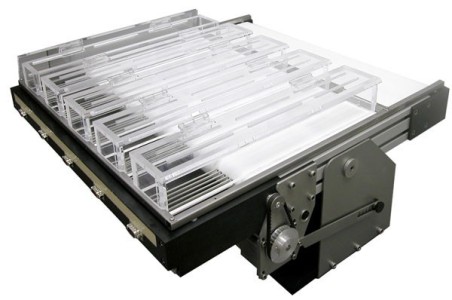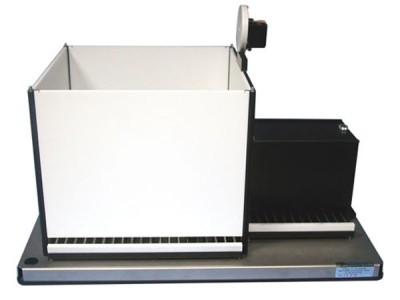Authors
A Dayal, K Schrötter, Y Pan, K Föhr, W Melzer, M Grabner
Lab
Medical University of Innsbruck, Austria
Journal
Nature Communications
Abstract
Skeletal muscle excitationcontraction (EC) coupling is initiated by sarcolemmal depolarization, which is translated into a conformational change of the dihydropyridine receptor (DHPR), which in turn activates sarcoplasmic reticulum (SR) Ca2+ release to trigger muscle contraction. During EC coupling, the mammalian DHPR embraces functional duality, as voltage sensor and l-type Ca2+ channel. Although its unique role as voltage sensor for conformational EC coupling is firmly established, the conventional function as Ca2+ channel is still enigmatic. Here we show that Ca2+ influx via DHPR is not necessary for muscle performance by generating a knock-in mouse where DHPR-mediated Ca2+ influx is eliminated. Homozygous knock-in mice display SR Ca2+ release, locomotor activity, motor coordination, muscle strength and susceptibility to fatigue comparable to wild-type controls, without any compensatory regulation of multiple key proteins of the EC coupling machinery and Ca2+ homeostasis. These findings support the hypothesis that the DHPR-mediated Ca2+ influx in mammalian skeletal muscle is an evolutionary remnant.
BIOSEB Instruments Used
Spontaneous activity wheels (BIO-ACTIVW-M),Grip strength test (BIO-GS3),Treadmill (BX-TM),Passive avoidance (LE870)
Source :

 Douleur - Allodynie/Hyperalgésie Thermique
Douleur - Allodynie/Hyperalgésie Thermique Douleur - Spontanée - Déficit de Posture
Douleur - Spontanée - Déficit de Posture Douleur - Allodynie/Hyperalgésie Mécanique
Douleur - Allodynie/Hyperalgésie Mécanique Apprentissage/Mémoire - Attention - Addiction
Apprentissage/Mémoire - Attention - Addiction Physiologie & Recherche Respiratoire
Physiologie & Recherche Respiratoire




































 Douleur
Douleur Système Nerveux Central (SNC)
Système Nerveux Central (SNC)  Neurodégénérescence
Neurodégénérescence Système sensoriel
Système sensoriel Système moteur
Système moteur Troubles de l'humeur
Troubles de l'humeur Autres pathologies
Autres pathologies Système musculaire
Système musculaire Articulations
Articulations Métabolisme
Métabolisme Thématiques transversales
Thématiques transversales Congrès & Meetings
Congrès & Meetings 



